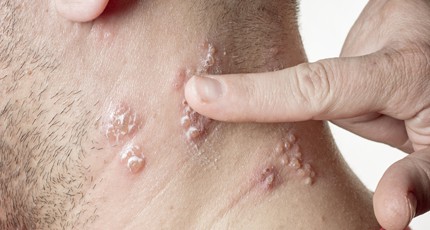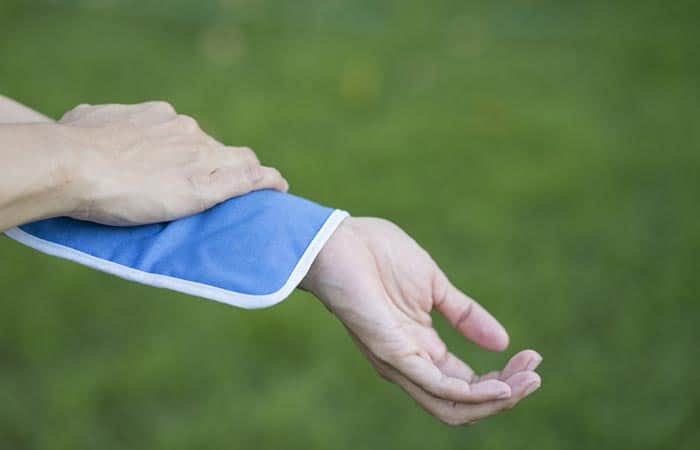There are several viral infections affecting populations worldwide. Among the infections, especially in the United States, is the shingles infection. Statistics show that roughly one million Americans suffer from the condition every year. The majority of these are adults. The virus varicella-zoster causes the disease. It resembles chickenpox in appearance because the same virus causes the two. However, one usually presents earlier in life compared to the other.
In most patients, chickenpox develops during childhood. Once the chickenpox heals, it leaves behind a dormant virus in the host’s nervous system. Several factors later in life can reactivate the dormant virus to cause a shingle infection. Therefore, shingles mostly occur in patients who healed from chickenpox infection. As such, the condition is common in adults. This is why the Center for Disease Control and Prevention (CDC) requires that the shingle vaccine be administered to all adults above the age of 50.

How does the infection present?
The presentation of the infection is similar to chickenpox. However, the condition appears as a painful rash, unlike that of chickenpox. It also presents with itching and is accompanied by the following symptoms:
- Redness on the affected areas.
- A rash on the face, ears, and torso.
- Blisters filled with fluid.
In severe cases, symptoms can involve the general body, such as:
- Fever and chills.
- General body weakness.
- Headaches.
If left untreated, you are at risk of developing complications such as:
- Secondary bacterial infection as a result of itching. Since the fluid-filled blisters break easily, itching can leave open lesions. Your nails can introduce microorganisms to the lesions that cause a secondary infection. This is why doctors recommend that you frequently wash your hands when you have an infection with oozing blisters.
- A painful rash in the eyes that can permanently damage your vision.
- An untreated infection of the ear can lead to complications like hearing loss and extreme pain in the ear.
A significant difference between the infection and chickenpox is that it is less contagious than chickenpox. Only a person with oozing blisters can spread the disease to a person that has never been infected with chickenpox. If you have had chickenpox before and come into contact with oozing blisters, you cannot develop the infection. However, you are highly like to get chickenpox when you come into contact with the oozing blisters of an infected person if you have never contracted the chickenpox. To avoid the virus’s spread, you need to clean and cover the blisters, especially if you have oozing blisters.

How to cure the infection.
Shingle infections can last two weeks with proper care and treatment. However, a lack of proper management can make the condition last up to six weeks. Therefore, it is essential to seek a doctor’s services when you notice symptoms of the infection. Your doctor can advise you on some home remedies you can adopt for a more effective treatment alongside medications.
Medications that your doctor will prescribe include:
- Antiviral drugs – Since a virus causes the infection, antiviral medications are the mainstay treatment. Unlike the two categories of drugs below, antiviral medications address the infection’s root cause, while the medicines below aim at relieving symptoms. Common antivirals in use include acyclovir and valacyclovir. These drugs are in the form of oral tablets and act by inhibiting the virus’s replication, thereby slowing down the spread of the infection. The best period to start antiviral therapy is within 72 hours of the appearance of symptoms.
- Antihistamines – Itching and redness are frequent symptoms of the infection. To relieve these symptoms, you need antihistamine drugs like cetirizine. Symptoms like itching are caused by the overproduction of histamines, a chemical in the body involved in immune responses. Antihistamine drugs inhibit the production of the chemical; therefore, relieving symptoms like itching. Antihistamines can be given as oral tablets or topical ointments and creams. Topical medications are applied to the affected areas. One topical available that can be used for the infection is EMUAIDMAX first aid ointment. The ointment achieves relief of symptoms like pain, itching, and inflammation within 24 hours.
- Pain medications – Shingle infections appear as a painful rash making pain medications essential in treatment. The pain medications used are usually over-the-counter medications like aspirin, acetaminophen, and ibuprofen.
Other than medications, you can take advantage of home remedies for effective management of the infection. Some treatments available include:
- Cold compresses and baths – Wrap frozen peas in a small towel and place it on the blister for roughly 20 minutes. Do this at least once daily to relieve pain and redness. Cold compresses can only be used if you are not using topical medications like ointments. This is because they can remove the ointment layer making the ointment ineffective. Additionally, you cannot use the compress after your blisters form a scar. Alternatively, you can take cold baths to achieve the same effect. Make sure you gently scrub your skin during the baths; aggressive scrubbing can break the blisters causing oozing. You can also combine both cold baths and cold compresses if your redness and pain are severe.
- Diet and supplements – Supplements are suitable for patients with a weak immune system that develop the infection. Supplements essential to these people are zinc, vitamin D, selenium, and vitamin C because they boost the immune function. A healthy diet can improve symptoms of the infection. Minimizing saturated and trans fats can reduce inflammation and redness. Therefore, ensure your diet contains fruits like grapefruit, watermelon, and cherries and vegetables like kale and spinach.
- Essential oils – Essential oils have become an increasingly popular home remedy in managing many conditions. Some oils effective against shingle infections include tea tree, chamomile, and eucalyptus oils. These oils have anti-inflammatory properties to relieve the redness of the rash. Furthermore, tea tree oil and chamomile oil have antimicrobial properties to prevent secondary infections as a result of itching.
- Colloidal oatmeal baths – Colloidal oatmeal is simply oatmeal ground to a fine powder. To create this bath, pour the oatmeal powder into a cold bath and soak in the bath for a few minutes. The bath will relieve the itching of the affected areas.
- Frequently wash your hands with soap and water to avoid developing a secondary infection.
